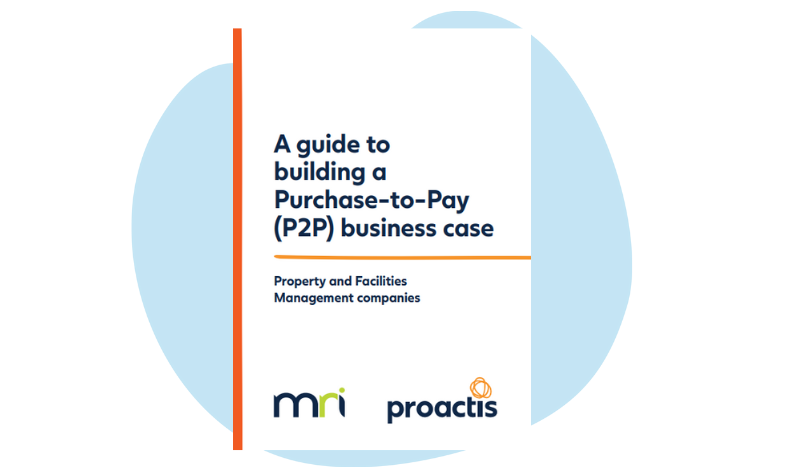What is move management
Move management is a critical, yet often overlooked, component of property management that involves coordinating and overseeing the relocation process within or between properties. Whether it’s a residential tenant shifting to a new flat or a commercial business moving to a new office space, move management plays a vital role in ensuring a smooth transition.
The complexity and potential for disruption associated with relocations can be overwhelming, particularly for property managers juggling multiple responsibilities.
In this post, we explore the intricacies of move management, its fundamental aspects and offer practical steps that organisations can take to handle moves efficiently.
What is move churn
Move churn refers to the frequent relocation of employees or departments within a company’s workspace. This phenomenon can stem from various factors, including organisational restructuring, shifting project teams, expansion efforts, acquisitions, or other evolving business needs. With the rise of hybrid working models in recent years, the dynamics of move churn have shifted, reflecting changes in how and where employees work.
High move churn can be both disruptive and costly if not managed effectively. It can lead to decreased employee productivity and satisfaction, as constant relocations can disrupt workflow and hinder team cohesion. The churn rate is typically expressed as a percentage of the total number of occupants who have been relocated over a given year.
For organisations, monitoring and understanding their move churn rate is crucial. By keeping a close eye on this metric, companies can better manage the impact of frequent relocations and take proactive steps to minimise disruptions, ultimately supporting a more stable and productive work environment.
Solutions such as integrated workplace management software (IWMS), facilities management and space management software can be leveraged to more efficiently manage the available office space, while integration with other core systems can ensure moves are handled effectively.
Steps to effective move management
Managing a move effectively requires careful planning, coordination and communication. There are a number of key steps that property managers can take to ensure a smooth transition:
Avoid bottlenecks
Efficient move management hinges on careful planning and coordination to prevent bottlenecks that can disrupt the relocation process.
Create a detailed move plan: Develop a comprehensive move plan that outlines every task, sets clear deadlines and assigns responsibilities to specific individuals or teams.
Coordinate with relevant departments: Engage with all relevant departments early in the planning process to avoid scheduling conflicts and ensure resource availability.
Implement a phased move schedule: Stagger moves to prevent congestion and minimise downtime. Ensure that critical functions remain operational throughout the move. This may involve setting up temporary workspaces, maintaining essential IT services or scheduling moves during off-peak hours.
Maintain accurate data
Accurate data management is essential for a smooth and efficient move.
Keep an up-to-date inventory: Utilise asset management software to track the location and condition of items in real time.
Maintain accurate employee records: Keep precise records of employee locations and roles within the office. This includes details on which desks or offices are assigned to which employees.
Update records immediately after each move: This includes revising the inventory records to indicate the new locations of furniture and equipment, as well as updating employee records to show their new desk or office assignments. Remember to communicate updates to all relevant parties, including facilities management, IT support and departmental heads.
Simplify request process
Streamlining the move request process can help reduce delays and minimise confusion.
Automate the move request process: Implement a centralised system for submitting and tracking move requests. Use automation tools within the system to handle routine tasks such as request approvals, status updates and scheduling. Automation can streamline workflows and reduce the administrative burden on your team.
Provide employee training: Offer comprehensive training on how to access and use the centralised move request system. Ensure that the training covers key functionalities, such as submitting requests, checking status and making updates.
Implement standardised forms: Develop and implement standardised forms for move requests. These forms should capture all necessary information upfront, such as the nature of the move, required resources and specific needs or preferences.
Centralising communication
Effective communication is key to a successful move. Centralising communication ensures that all parties involved are informed, coordinated and aligned throughout the relocation process.
Establish a dedicated team or contact: Set up a dedicated team or designate a key contact person to oversee all aspects of the move. This team should be responsible for coordinating between departments, managing logistics and addressing any issues that arise during the move.
Designate a single point of contact: Appoint a single point of contact for all move-related enquiries. This individual or team should handle all questions, concerns and requests related to the move.
Provide regular updates: Keep employees informed with regular updates about the move schedule, progress and any changes.
Monitor employee satisfaction
Monitoring employee satisfaction during and after a move is essential for ensuring a smooth transition and maintaining a positive work environment.
Conduct surveys before and after moves: Distribute surveys to gather employee expectations, concerns and preferences before the move takes place. After the move, conduct follow-up surveys to collect feedback on the relocation process, including the effectiveness of communication, the condition of the new workspace and overall satisfaction.
Utilise feedback for improvements: Use the feedback from survey results to make necessary adjustments for future moves.
Offer support services: Set up help desks or support lines to assist employees with any move-related questions or problems. Alternatively, appoint move champions or point persons within departments to offer on-the-ground support during the transition.
Address issues promptly: Be proactive in addressing any issues or concerns raised by employees and conduct regular check-ins with employees to ensure that any lingering issues are addressed.
Leverage software
Utilising specialist software is crucial for automating and streamlining the move process.
Automate processes: Choose office space management software specifically designed for move management to automate key aspects of the process. Ensure that the software you select is equipped to manage various elements of the move, including task assignments, inventory tracking and communication.
Utilise key software features: Track tasks, manage inventory and communicate in real time, as well as benefit from customisable reporting features to generate insights and analyse progress, budgets and employee feedback.
Integrate with other business systems: Synchronise the move management software with HR and FM systems for consistent sharing of data around employee roles and workspace requirements, plus space management and logistics. Integration reduces the risk of errors and improves overall efficiency by providing a unified view of move-related data.
Have backing from leadership
Securing support from senior leadership is crucial for the success of any move. Leadership backing ensures that the move is prioritised, well-resourced and effectively communicated across the organisation.
Resource allocation: Ensure that senior leadership understands the importance of the move and commits to providing the necessary resources. This includes budget allocation, personnel and any other resources required to facilitate the move.
Clear objectives: Whether it’s to accommodate growth, improve facilities or enhance operational efficiency, communicating a clear rationale helps in securing leadership support and aligning everyone’s efforts.
Highlight benefits: Emphasise the benefits of the move to gain buy-in from all stakeholders. This could include improved working conditions, enhanced collaboration spaces, increased operational efficiency or cost savings.
MAC
MAC stands for Moves (relocating employees or assets), Adds (incorporating new employees or assets) and Changes (modifying existing setups). Effective MAC management ensures that workspace adjustments are handled smoothly and efficiently.
FAQs
Contact MRI Software
To find out more about how MRI Software’s integrated workplace management software can plan, manage and execute improvements in your workplace, request a demo or call us today on .
A guide to building a Purchase-to-Pay business case
Spend Management is a journey, and for many organisations, one of the first, most important legs of the trip is deployment of a Purchase-to-Pay (P2P) solution. In recent times, property and facilities management companies and their Finance department…

